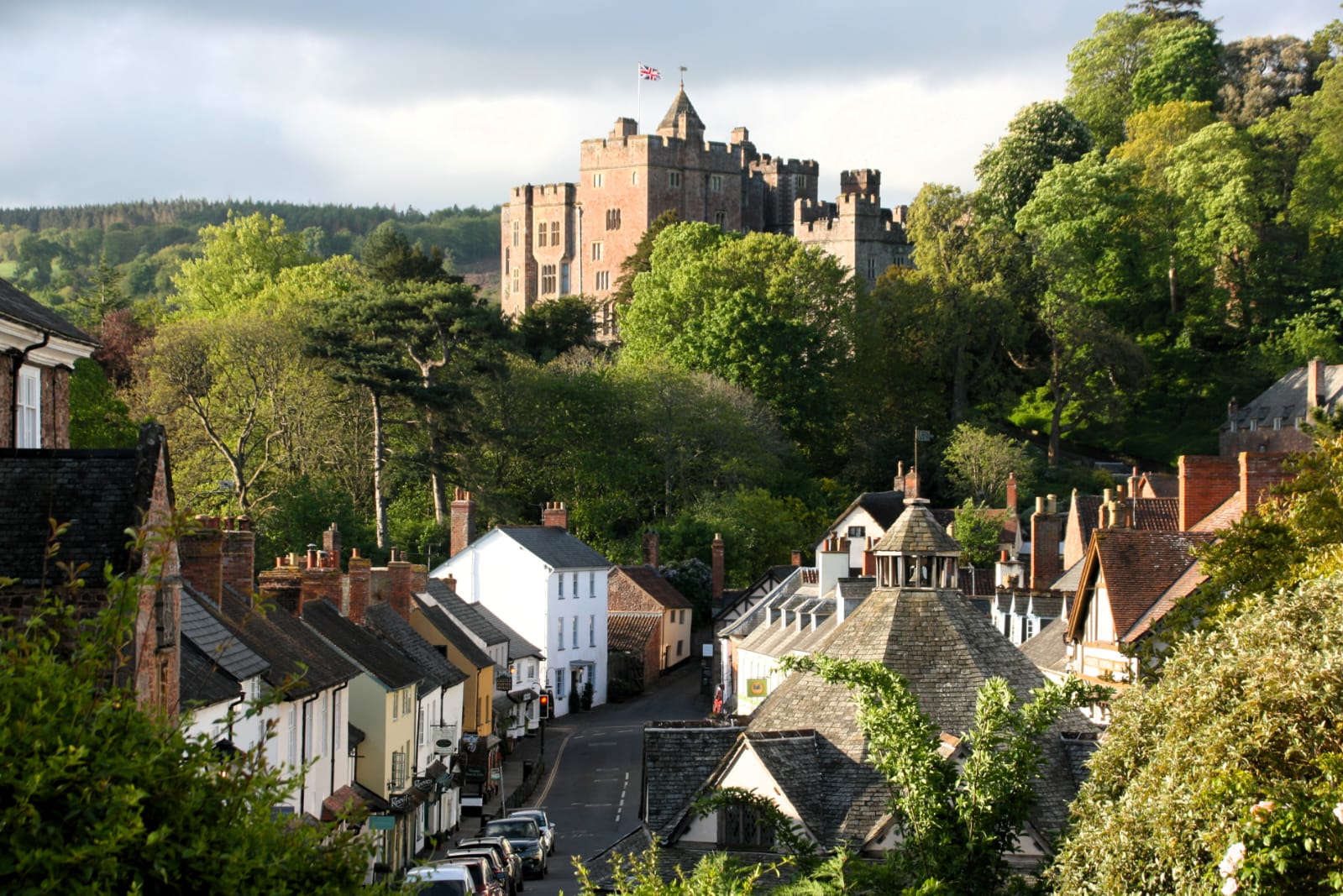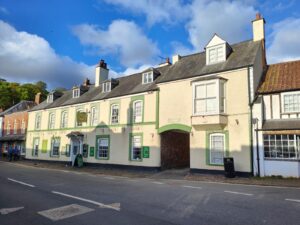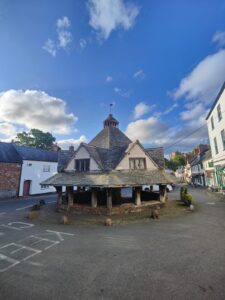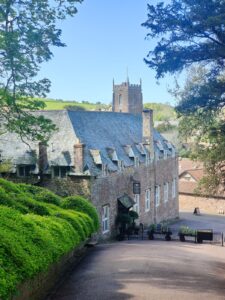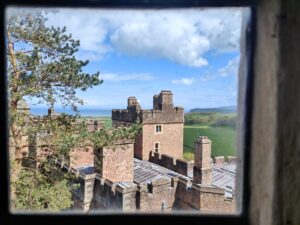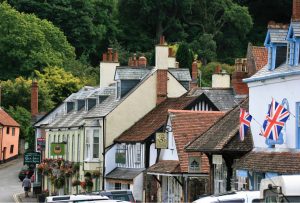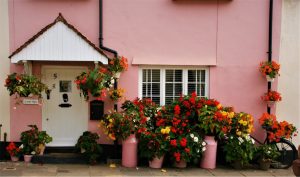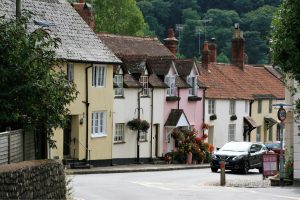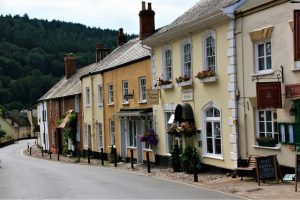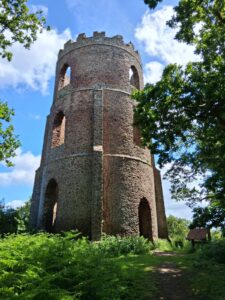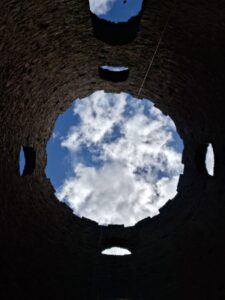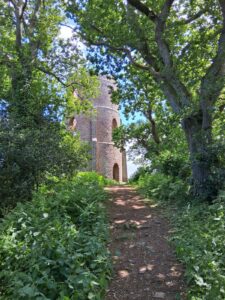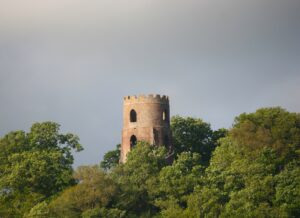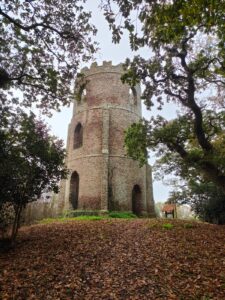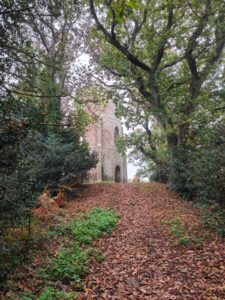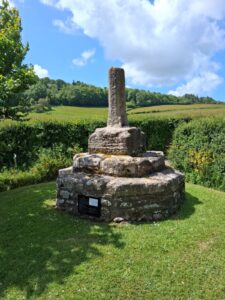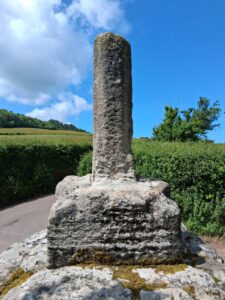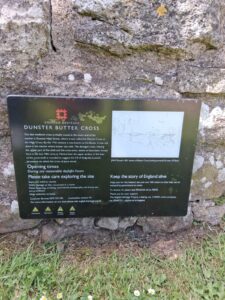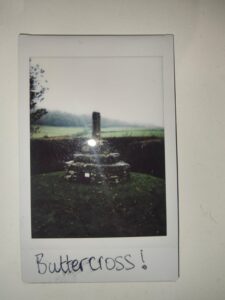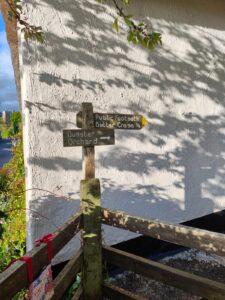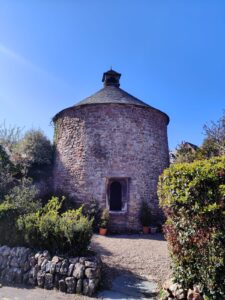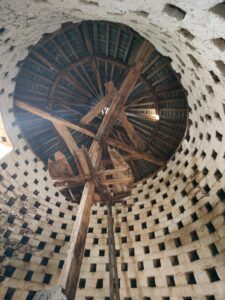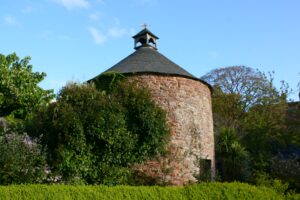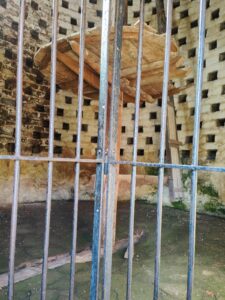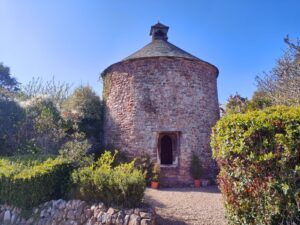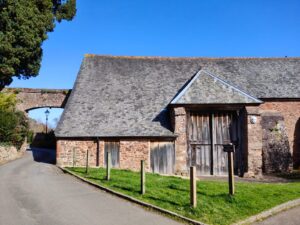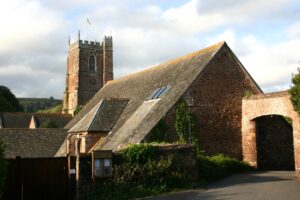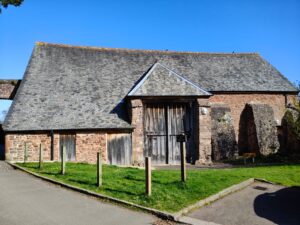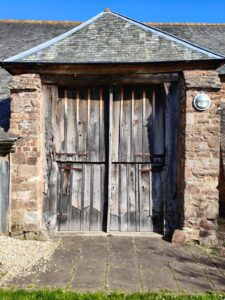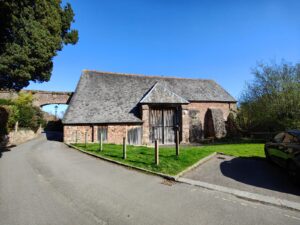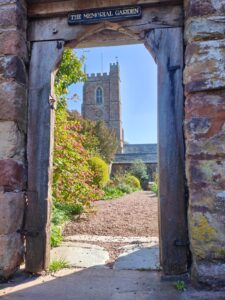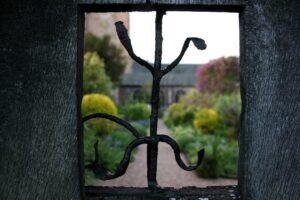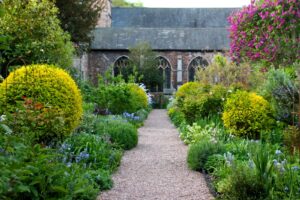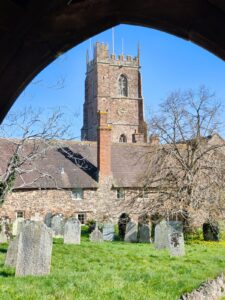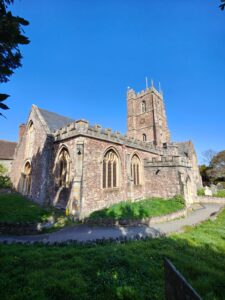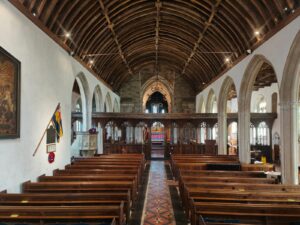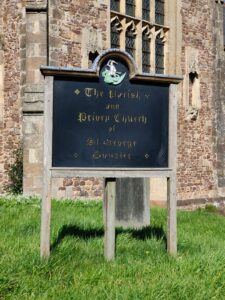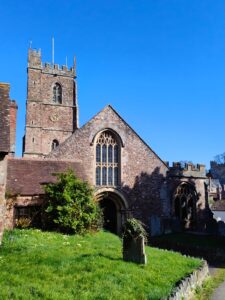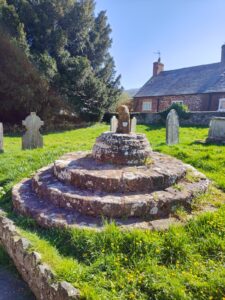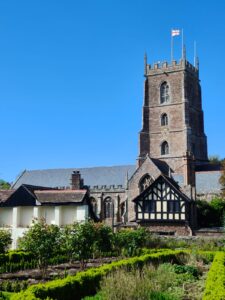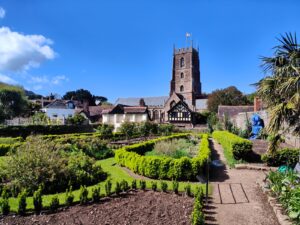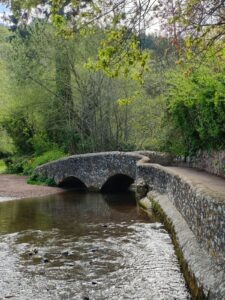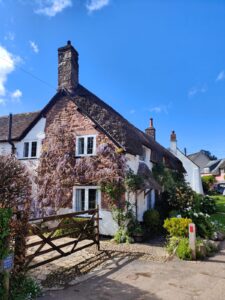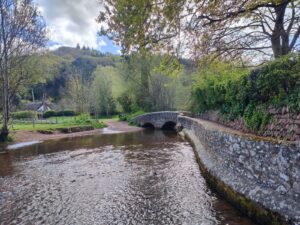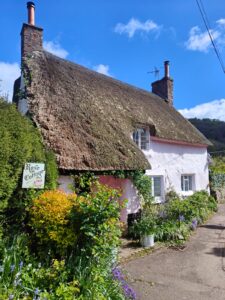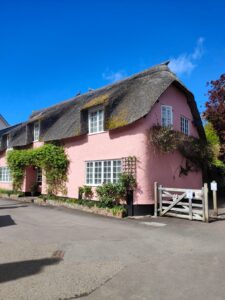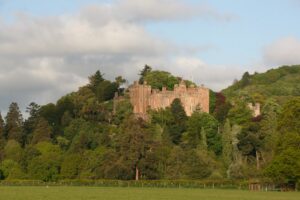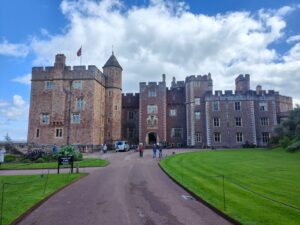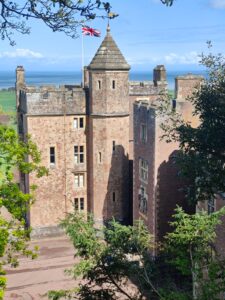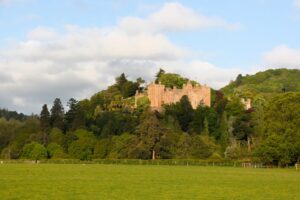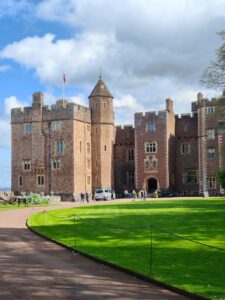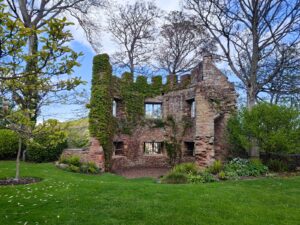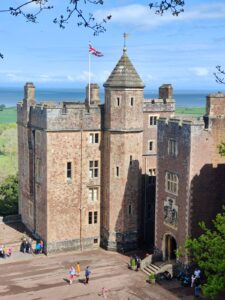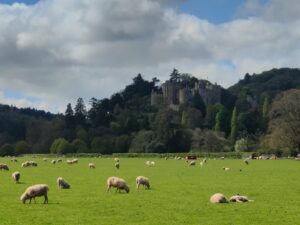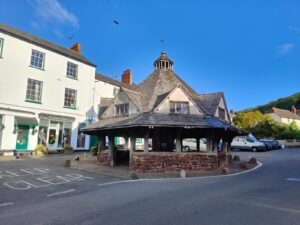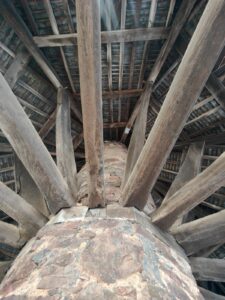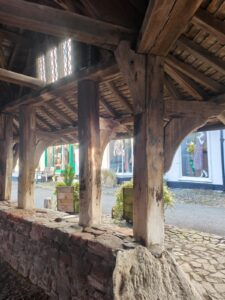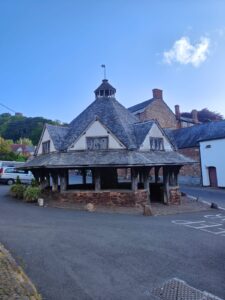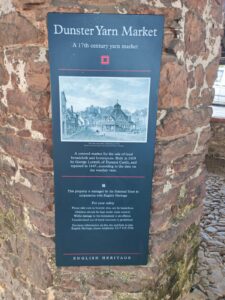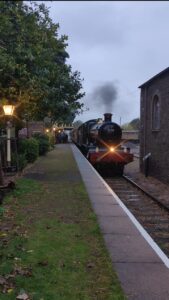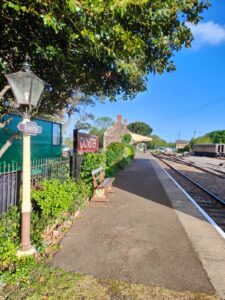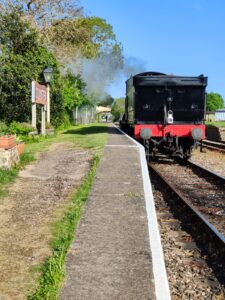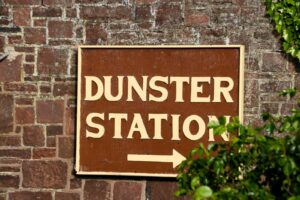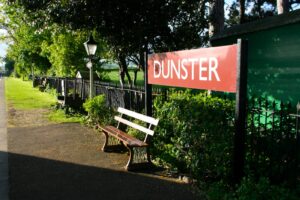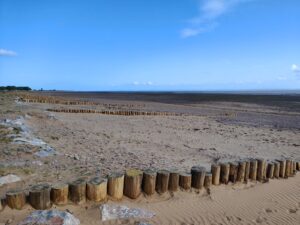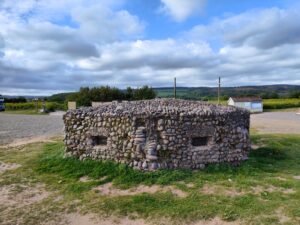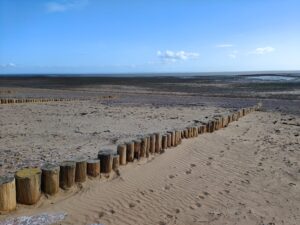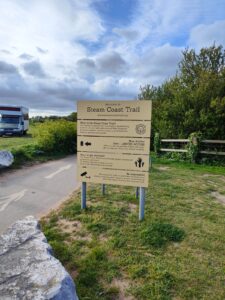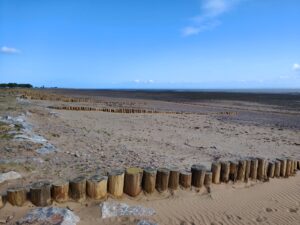Dunster
Somerset, Exmoor
You may not have visited Dunster. You may never have even heard of Dunster. But, I hope I can portray this small, charming and beautiful medieval village. Located off the A39 near the seaside town of Minehead in Somerset and on the northeastern edge of Exmoor National Park, it is England at its best.
Whether you have a couple of hours or can manage a couple of days it is a fascinating place to visit and the perfect base from which to branch out onto Exmoor. Full of interest and intrigue, Dunster has it all. There are around 200 listed buildings and monuments that form the village.
There are beautiful cottages, a historic castle, a desirable high street, elegant church, medieval buildings and a unique Yarn market that grace the village – what more could you want! It was once a thriving trading port before its wealth came through the wool trade. Join me as I explore this dreamy village.
The National Park Centre
The National Park Centre in Dunster is one of three located across Exmoor (the other two being at Dulverton & Lynmouth). I have found when travelling and exploring anywhere in the world, not just the UK, that these venues provide the perfect starting point to gather information, resources, tips and advice.
A visit here is made to gather information regarding the special habitats that exist across Exmoor for when one moves away from Dunster village. There is plenty to see and do on the moors. On this occasion they provided me with a useful map of the town of Dunster and some other leaflets which should inspire me to visit other places it its environs.
The road, the A396, which leads to the village from the A39, is known as Dunster Steep before it continues through the village and out onto Exmoor. The National Park Centre is located on the left-hand side as you approach the village. After my visit I leave here following my map and take a short walk towards the village before taking a footpath on my right which leads me to Conygar Tower.
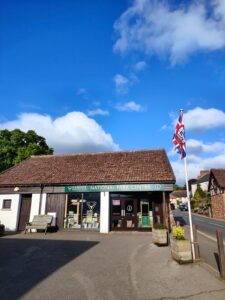
Conygar Tower
To the naked eye this tower could be easily confused as part of the castle, but as one approaches or explores the village of Dunster you soon realize that this is a separate site to the castle. It still has connections to it though as it was commissioned by Henry Luttrell and designed by Richard Phelps to enhance the landscape around Dunster Castle.
Standing on top of the hill it offers views out over the bay of Minehead. Conygar Tower is circular in design, has no roof, is a grade 2 listed building and was built in 1775. It stands about 18m in height. The word Conygar comes from two medieval words: coney which meant rabbit and garth meaning garden. The surrounding woods offer a very pleasant walk up to the tower and it should be added to everyone’s ‘must see’ list when visiting the village of Dunster.
After walking up to Conygar Tower, I retrace my steps back to the main road and walk along ‘The Ball’, a narrow road that leads to a footpath. Along the way and before the footpath is reached is the chance to capture the iconic ‘picture postcard’ image of Dunster. After walking along the footpath I reach my next discovery, Dunster Butter Cross.
Dunster Butter Cross
The unknown and rather puzzlingly situated Butter Cross is found on the outskirts of the village. Once a staple of high streets in many market towns across the country they provided the people of England with a reminder of the death and resurrection of Jesus. On closer inspection you may find that this particular cross is more of a stump than a cross. This is due to its relocation from the high street to its current location at the end of a footpath.
This cross dates to the 15th century and is referred to as ‘butter’ cross as this is where the butter would have been sold on market day. The cross could have been damaged during the years of the reformation, but again there is no proof as to when. There is also little evidence as to ‘why it was moved’ but adds a layer of intrigue to this fascinating village.
After a photo and learning about the ‘Butter Cross’, I turn left down St George’s Street and head back towards the village centre. You can perhaps guess where this street leads to by the name of it as it refers to St George’s church. Before St George’s Church is entered time was taken to turn left along ‘Priory Green’, a road which leads back to the footpath accessed previously. Instead of walking the length of this road, there is but a short distance to discover the Dovecote, Memorial Garden and Tithe Barn which are all located opposite each other.
Dovecote
This charming building is tucked away opposite the Tithe barn and walls of the Priory Church of St George. There is no evidence of when it was built but it is estimated that the building was built around the 13th and 14th century as it similar in design to others known to be of that period. The Luttrells did some repair work in the 18th and 19th century.
The Dovecote was to provide the privileged with fresh meat in the form of squabs (newly hatched pigeons) which meant that the buildings were often referred to as Pigeon houses. These buildings are Norman in design, and it was estimated that 26,000 of them were situated around England in the 17th century. There is another example in nearby Porlock, so I will have to keep my eyes peeled when we leave this fascinating village.
Tithe Barn
Also dating back to the 14th century, this barn was originally part of the Benedictine Priory. Sadly, very little of it remains due to several refurbs, it now serves the community. A tithe refers to an ancient Christian tradition based on Old Testament law. A tithe of 10% of the annual produce in crops was to be stored in the barn for the owners. The information board nearby lets us know that this was once part of the Dunster Estate under the de Mohuns before it was transferred to the Priory when William de Mohun established one here.
Memorial Garden
Completely hidden and sheltered is Dunster’s Memorial Garden and is probably unknown to many. It is a quiet and peaceful place and offers a chance for reflection. Access is through a small gate hinged in a beautiful archway in the tall wall that surrounds this former cloister garden of Dunster Priory.
The garden now takes the name of Memorial Garden as it was dedicated to the lives lost in conflicts.
This walking tour takes us back to the entrance to St George’s church where it is possible to walk through the graveyard, past the preachers cross and the western Norman entrance to the southern entrance.
St Georges Church
A religious building has stood here almost as long as the castle. Sadly, nothing remains of that era. You can read more detail of the discoveries made when I visited the inside of the church, here. The parish and priory church of St George is a fascinating church. The priory was dissolved in 1536 on the order of Henry VIII at the time of the dissolution of the monasteries.
It is claimed that the rood screen is the longest in England. Inside one can learn the basics about the villages’ two famous families, the de Mohuns and the Luttrells.
Leave the church to the south and come out on Church Street (also the A396) and take a right onto West Street before taking a left just after the Forrester Arms and along Park Street and head towards Gallox bridge.
Gallox bridge
This picturesque medieval stone bridge crosses over the River Avill and was originally known as ‘Gallows Bridge.’ Dating back to the 15th century, the bridge was built for the packhorses to transport fleeces from Exmoor to Dunster. These bridges are apparently commonplace across Exmoor, so it is best to keep eyes peeled when out and exploring. Access to the bridge from the town side is along Park Street at the end of which are some very handsome cottages. On the other side of the river there looks to be a dead end, but those with time on their hands can pick up the public footpath to Bats Castle (an old Iron Age hill fort).
Return over the bridge and retrace one’s steps slightly and then take a right turn up Mill gardens which leads to Dunster Watermill and Castle grounds entrance.
Dunster Castle
The castle, it could be argued, is the jewel in Dunster’s crown. In the Dunster Castle blog there is detail of the two families who built the castle we appreciate today. There is little to no evidence of the castle that stood here nearly 1000 years ago but evidence from the 13th century onwards can been seen and is worth the entrance fee. The site is now run by the National Trust.
After completing a visit to the castle, leave by the main entrance and follow a little road down to the high street.
Dunster Yarn Market
The high street of Dunster village offers a picture of ‘British High Streets’. Quintessentially English it has charming independent shops and eateries that are interspersed with pubs and hotels. No doubt little has changed in appearance in preceding centuries. The shops, food and accommodation will likely draw you in but shouldn’t distract you from the octagonal building situated at the far end of the high street. This octagonal structure, known as the Yarn Market, was built in 1609 by George Luttrell of Dunster Castle with repairs being made in 1647. It was a covered market where the sales of local broadcloth and homespun and is evidence of Dunster’s once flourishing wool trade.
This brings us to the end of the tour around the historic and charming village of Dunster. Slightly further afield are two places that also form part of the village and shouldn’t be ignored. They are within walking distance but can be reached by car.
Dunster Station
One way of arriving at Dunster and avoiding all the busy roads is by a heritage steam train. Previously mentioned the West Somerset Railway runs steam trains here during the season, just like the line’s original plans. The line was an extension of the line that was bringing success to the neighbouring Watchet, so, George Luttrell, seeing its success, encouraged an extension of the line to Minehead. The Luttrells sponsored the building of the station for visiting guests, most notable polo players. Rumours are that George did not want his picturesque castle and polo grounds disturbed so the station was set a fair distance (about 1 mile) from the town centre. Goerge did invite the Maharajah of Jodhpur but was a little surprised when he turned up with his full team which included 62 polo ponies. Other players from all over the world came to play polo at Dunster and included Winston Churchill.
Dunster Beach
A fair walk from the village centre is Dunster Beach. The West Somerset railway line runs along the coast edge from Blue Anchor Station and arrives at Dunster Station. The beach on its northern side is that of Dunster beach, a pleasurable mix of sand and shingle. Views from the village are exquisite on a good day. The beach is nearly a mile and half from the village centre so is often overlooked when visits are made to Dunster. Wooden posts in the beach segregate individual sections of the beach and there is a “pill” box guarding the bay. These concrete pill boxes were built as a defence against unlikely invasions during World War II. Sadly, access isn’t permitted to these.
Conclusions
This concludes an excellent meandering to the village of Dunster. My trip was one of complete discovery, education and admiration. It began with the understanding of a church’s construction as phrases and names were better understood. It has left me with a little bit of inquisitiveness that maybe answered with a visit to the Abbeys at Bath and Glastonbury. A visit to the village’s 11th century castle built on the initial findings of the names de Mohun and Luttrell as I discovered these families’ association with the village. The castle has been on the site for nearly 1000 years and has witnessed the great and gory history that shaped these lands. Dreamy Dunster is a picture of England, I hope that you enjoy it as much as I have!

